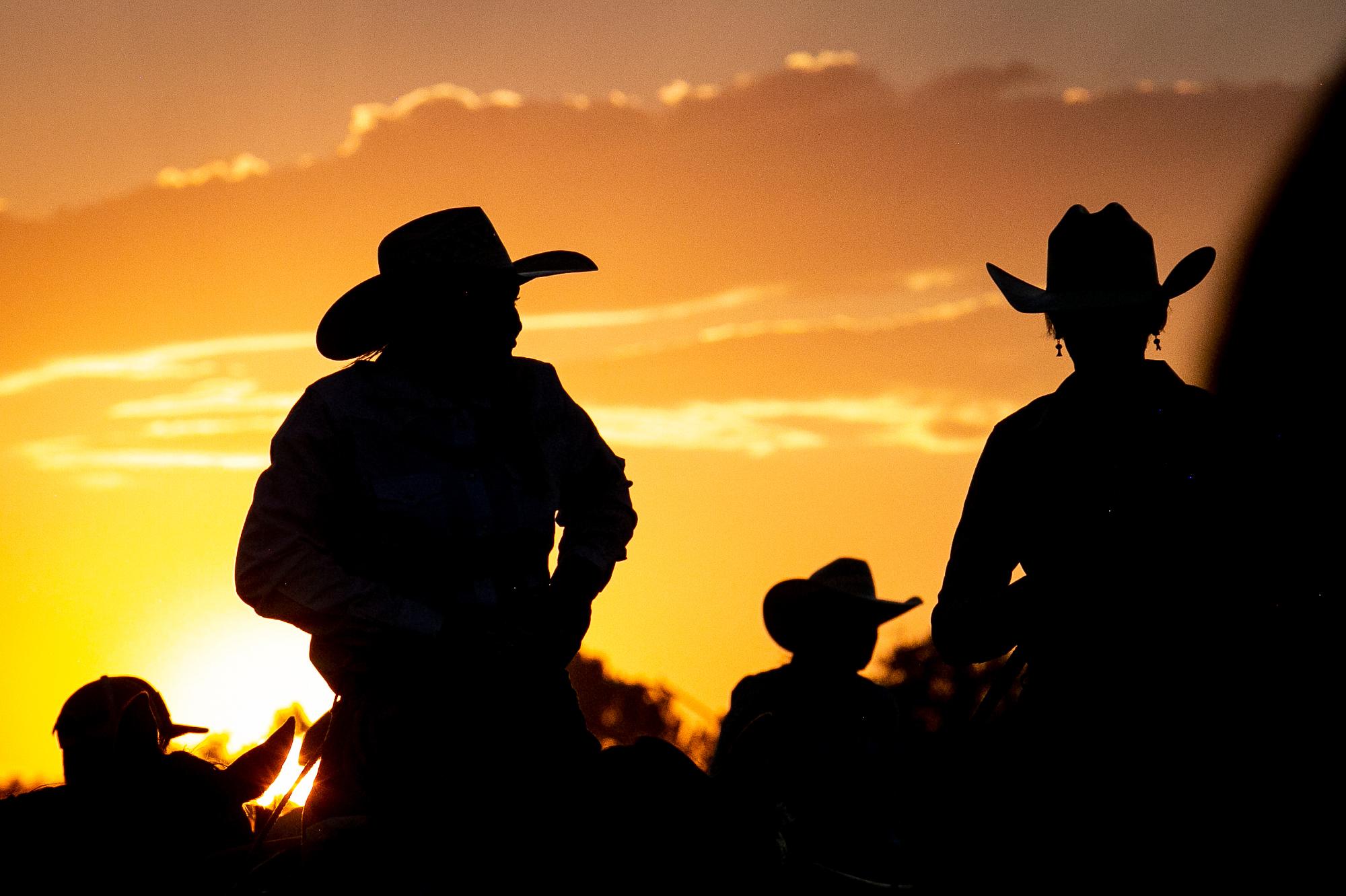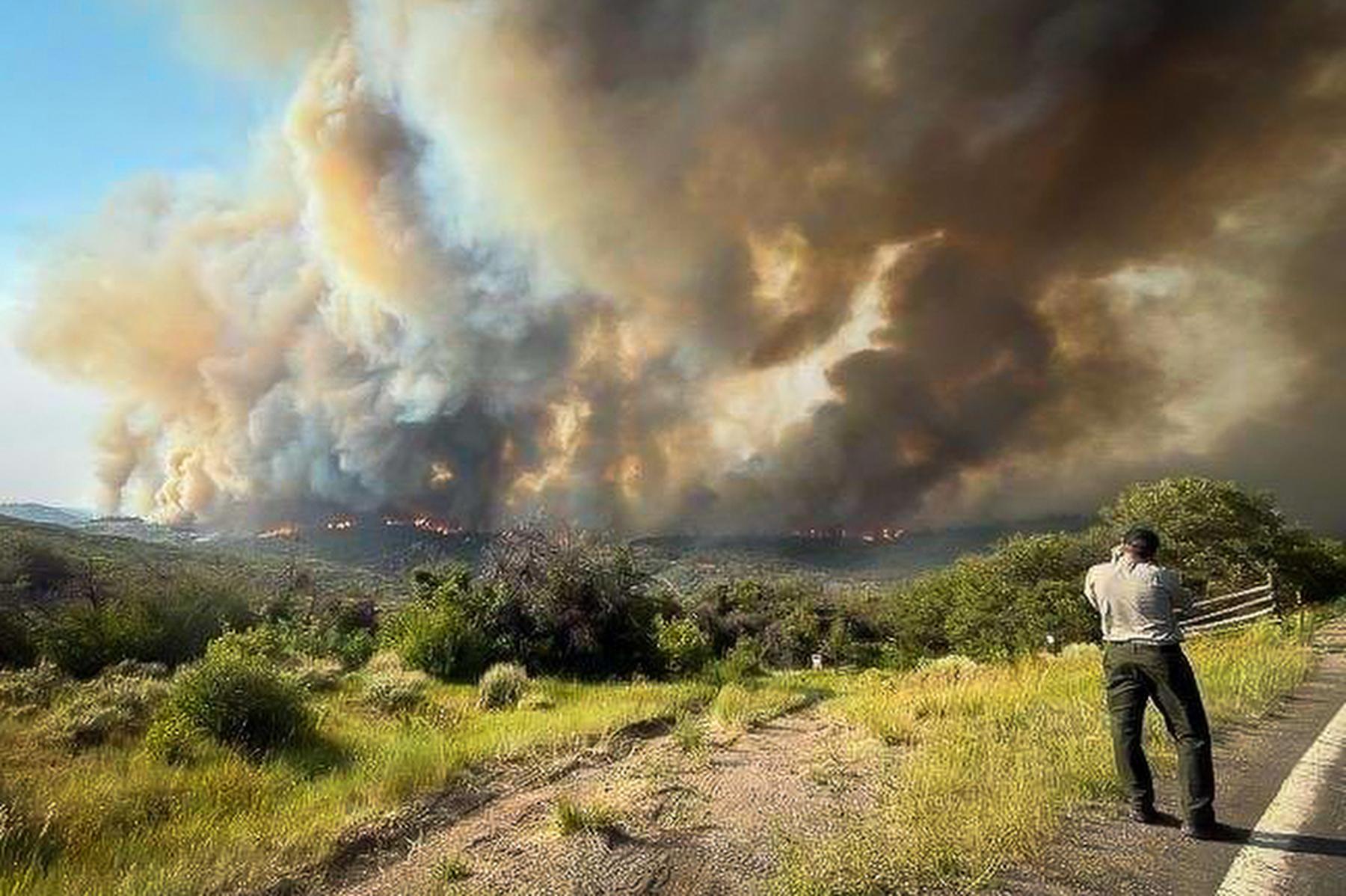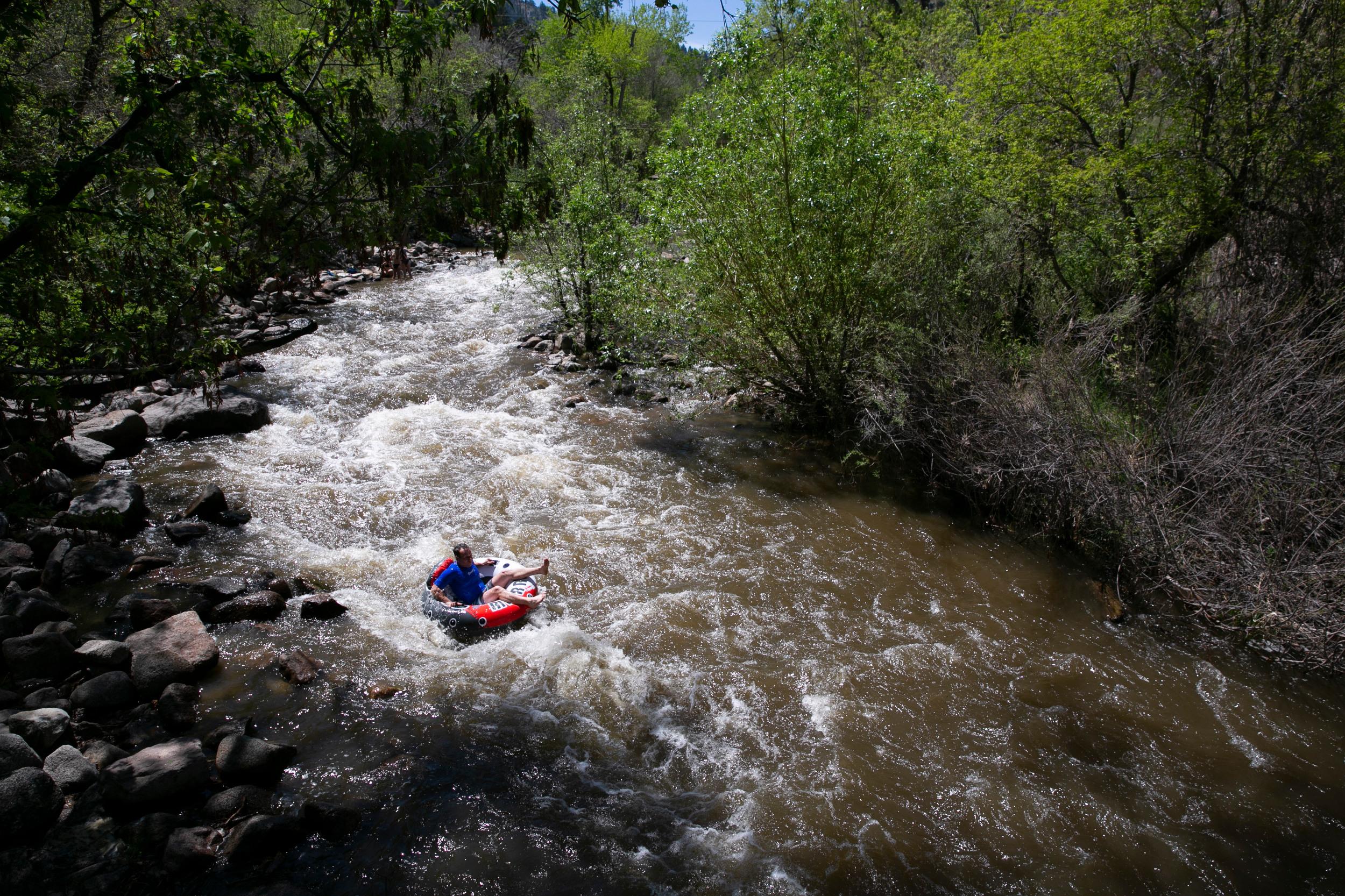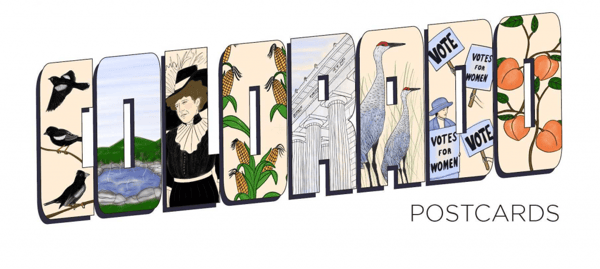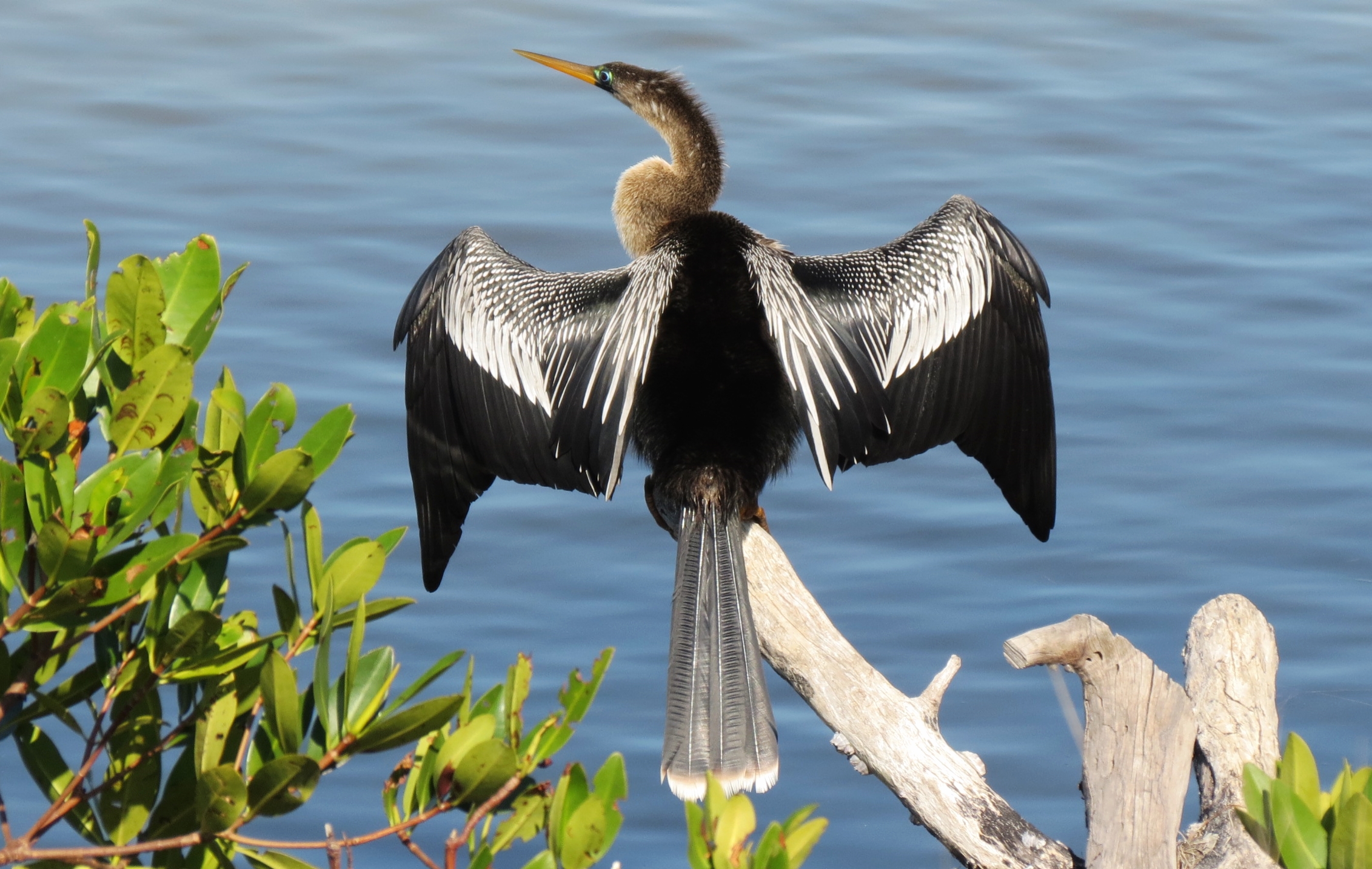
With dark glossy wings and a neck like a serpent, a tropical anhinga has made Boulder its new perch.
The sleek underwater hunter, often seen in the swamps of Florida or the wetlands of Mexico, was spotted hanging out at a pond near 95th Street in Boulder County on June 2. Since then, the female bird, identified by the light-colored plumage on her neck, has come and gone a few times, but she’s stuck around long enough to cause a stir in the birding world.
“I was pretty surprised,” said Scott Taylor, director of the University of Colorado’s Mountain Research Station. “It's just the fourth record of one of these birds in the state of Colorado, so it was pretty exciting to hear about it.”
And even better: this is the first “chaseable” anhinga in Colorado history. Others, spotted as far back as 1931, haven’t stuck around long enough to fall into that category.
Wait — what’s a 'chaseable' bird?
In birding terms, a “chaseable” sighting means a rare bird is sticking around long enough in a public, accessible spot for other birders to go see it. It’s not just a fleeting glimpse or a lucky one-person find; it's a full-on birding event. And this unusual guest has already drawn birders from hundreds of miles away.
Why is it called a snakebird?
Anhingas are known for their stealthy, underwater hunting style. “Their face almost looks like a heron, but then they have this long neck attached to a body that looks like a cormorant, which are more common in Colorado. They swim around underwater with their feet, often with just the top of their face exposed, and then they'll dive down to catch fish,” Taylor said. “That's where the term ‘snakebird’ comes from because from a distance when they’re swimming around, you could confuse it with a snake.”
And when they’re done fishing, they do something else that makes them stand out: spread their wings dramatically to dry.
“They don't have good waterproofing on their feathers, so they have to dry off after they go swimming,” Taylor said.
A long way from home
The birds are about half the size of a Canada Goose and typically live in warmer climates with access to fresh water. So what’s this one doing in Boulder?
Taylor calls it a case of “avian vagrancy”—a term for when birds show up in places they’re not expected. Sometimes it’s caused by weather events like a big storm, sometimes it’s disorientation during migration, sometimes… birds are just weird.
“The closest breeding colony of anhinga is in Oklahoma at the Tishomingo National Wildlife Refuge,” Taylor said. “But, who knows? It could be a weather system, it could be a bird that's just kind of gotten lost when it was looking for a new place to set up a colony and breed.”
What the Anhinga arrival could mean for Colorado’s ecology
While rare birds popping up in unusual places can be exciting, they may also be a sign of larger ecological shifts.
Taylor notes that human-made wetlands—like some of the ponds and reservoirs in Colorado—can provide great habitat for birds like anhingas, which are piscivores (fish-eaters) and prefer warm, shallow waters full of prey.
“These top predator aquatic birds are good indicators of ecosystem health. If they're breeding successfully, that means there aren't contaminants in the environment,” Taylor said. “Historically, waterbirds suffered pretty significantly from DDT (pesticide) concentration, but seeing the failures of ospreys and bald eagles, for example, led to legislation to get rid of those chemicals from the environment. So [the arrival of an anhinga] is a good indicator of healthy aquatic ecosystems and lots of aquatic food.”
However, this species isn’t the first to have been noticed far from their typical range in recent years. A Crested Caracara (typically found in Texas and Florida) was spotted in Yellowstone National Park, Wood Storks (a sub-tropical species) have been found in the Great Lakes region.
“Climate change and habitat change is happening really fast, and that is influencing where birds are and how they're doing,” Taylor said.
But he also points to the benefits of a rare bird sighting like this for ecological awareness.
“A recent report came out of the Cornell Lab of Ornithology and others showing that there are continued declines in almost every group of birds in North America, and Colorado is no exception,” Taylor said. “So it's hard to say what this one example gives, but it's neat that it draws attention to the appearance of a rare species and gets people to pay more attention to birds.”
Taylor believes it’s likely the anhinga won’t stick around for long unless it finds another of its species nearby to breed with.
“Anhingas are just really charismatic and weird, so I'd encourage people to go out and try to see it if they can,” Taylor said.
Birders and curious onlookers hoping to catch a glimpse of Boulder’s newest celebrity can check the eBird app or website. It’s a citizen science database powered by bird sightings from across the globe—and it’s helping scientists (and everyday people) keep tabs on unusual visitors like this one.

